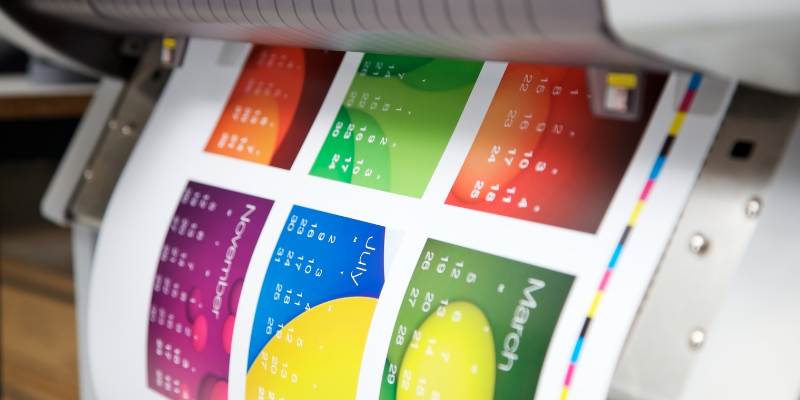DTF printing is the latest buzz in the world of digital printing. It’s a revolutionary method that has taken the industry by storm, and for good reason! DTF prints are known for their durability, vivid colors, and realistic textures. But what about their lifespan? How long can you expect your DTF prints to last before fading or deteriorating? In this blog post, we’ll explore everything you need to know about the longevity of DTF prints and how to keep them looking fresh for as long as possible. So sit back, relax, and let’s dive into the world of DTF printers!
What is DTF printing?
DTF printing, or Direct to Film printing, is a relatively new technique that has quickly gained popularity in the world of digital printing. It involves printing an image directly onto a specialized film using specially formulated ink, which is then transferred onto the fabric through high heat and pressure.
One of the advantages of DTF printing over other methods such as DTG (Direct to Garment) or screen-printing is its versatility. Unlike DTG printers, which are limited by their ability to print only on certain types of fabrics based on their composition and thickness, DTF printers can print on almost any type of fabric. From cotton and polyester blends to nylon or even leather – DTF prints have no limitations!
Another advantage lies in the quality and vividness of colors produced by DTF prints. The process allows for extremely fine details and realistic textures that make your design stand out from traditional screen prints.
DTF printing offers a unique combination of flexibility, durability, and exceptional quality that makes it stand out from other forms of digital garment decoration.
The benefits of DTF printing
DTF or Direct-to-Film is a relatively new printing technology that has been gaining popularity in recent years. The process involves printing an image onto a special transfer film, which is then heat-pressed onto the fabric. There are several benefits to using DTF printing:
- Firstly, it allows for full-color prints with vibrant and bold colors that are long-lasting. This results in high-quality prints that stand out and catch the eye.
- Secondly, DTF printing can be used on a wide range of fabrics such as cotton, polyester, blends and even spandex. This makes it suitable for various applications including apparel decoration.
- Thirdly, DTF technology offers a more affordable option compared to traditional screen-printing techniques especially when producing small quantities or complex designs.
- Fourthly, unlike other types of digital print technologies like DTG (Direct To Garment), there is no need to pretreat the garment before printing making the process faster and less complicated.
DTF printing provides an excellent alternative method for customizing fabrics with detailed graphics at an affordable cost.
How long do DTF prints last?
DTF printing is a relatively new technique in the world of textile printing that has become increasingly popular due to its impressive results. DTF prints are known for their vibrant colors, sharp details, and durability. But how long do these prints last?
The lifespan of DTF prints depends on various factors such as the quality of ink used, type of fabric printed on, washing conditions, and storage methods. In general, DTF prints can last anywhere from 1-3 years with proper care.
To prolong the lifespan of your DTF prints, it’s essential to follow some best practices such as avoiding exposure to direct sunlight or high temperatures. When washing your garments with DTF prints, use cold water and mild detergents without bleach or fabric softeners.
It’s also advisable to avoid ironing directly onto the print area but instead iron around it or inside out. If possible, try not to fold or stack printed items for extended periods as this may cause cracking or peeling over time.
While there are alternative textile printing techniques available like screen-printing or DTG printing that offer longer-lasting results than DTF printers; they tend to be more expensive and require specialized equipment.
In conclusion,DFT printing offers excellent quality at an affordable price point making it a great choice for small businesses looking into expanding their product line while still providing customers with durable products that will remain vibrant after several washes when cared for properly..
How to prolong the lifespan of DTF prints
To prolong the lifespan of DTF prints, it’s important to take certain measures during and after printing. Here are a few tips to keep in mind:
Firstly, use high-quality materials when creating your DTF prints. This includes using high-quality film and ink that can withstand wear and tear over time.
When printing, ensure that you’re using the correct settings for your specific printer model. This will help prevent any issues with ink smudging or fading over time.
After printing, allow enough time for the print to completely dry before handling it. Avoid touching the print directly as much as possible, especially if you have sweaty hands.
When storing your DTF prints, store them in a cool and dry place away from direct sunlight or moisture. This will prevent any damage caused by environmental factors such as humidity or heat.
Consider laminating your DTF prints if they’ll be exposed to harsh conditions such as rain or UV light on outdoor signs. Lamination can help protect against damage caused by these elements while also prolonging their lifespan.
Alternatives to DTF printing
While DTF printing has gained popularity in recent years, it is not the only option for textile printing. One alternative to consider is direct-to-garment (DTG) printing. DTG printers use inkjet technology similar to that of a home printer but with special water-based inks designed for fabric.
Another option is screen-printing, which involves using a stencil or mesh to transfer ink onto the fabric. This method can be cost-effective for larger orders and provides excellent color vibrancy and durability.
Heat transfer vinyl (HTV) is another alternative that involves cutting designs out of specialized vinyl material and then applying them to garments using heat. While HTV does have some limitations regarding intricate designs, it offers excellent durability and vibrant colors.
Sublimation printing uses heat-sensitive dyes that turn into gas when heated, bonding with polyester fibers and creating long-lasting prints with vivid colors. However, sublimation requires specific materials like polyester fabrics and coatings on hard surfaces.
Ultimately, each method has its pros and cons depending on your budget, design complexity, quantity needed, substrate material used etc., making it essential to weigh the options before deciding which technique works best for you!
Conclusion
DTF printing is a relatively new technology that has taken the garment decoration industry by storm. Its benefits, including high-quality prints, versatility in fabric options and low cost per print, make it a popular choice for many businesses.
When it comes to how long DTF prints last, there are several factors that go into determining their lifespan. While they can hold up well over time with proper care and maintenance, exposure to heat and sunlight can cause fading or cracking.




